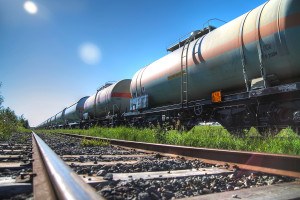

Rail tank cars being used to ship crude oil from North Dakota’s Bakken region are an “unacceptable public risk,” and even cars voluntarily upgraded by the industry may not be sufficient, a member of the National Transportation Safety Board said Wednesday.
 The cars, known as DOT-111s, were involved in derailments of oil trains in Casselton, North Dakota, and Lac-Megantic, Quebec, just across the U.S. border, NTSB member Robert Sumwalt said at a House Transportation subcommittee hearing.
The cars, known as DOT-111s, were involved in derailments of oil trains in Casselton, North Dakota, and Lac-Megantic, Quebec, just across the U.S. border, NTSB member Robert Sumwalt said at a House Transportation subcommittee hearing.
Forty-seven people were killed and 30 buildings destroyed in the blaze ignited by the Lac-Megantic accident. The Casselton accident, which occurred half a mile (kilometer) outside the town, created a massive fire that burned for more than 24 hours.
The NTSB has been urging replacing or retrofitting the tank cars since 1991, but the most recent U.S. effort to write tougher regulations for new cars didn’t get underway until 2011. An initial public comment period closed in December, and regulators are currently at work writing proposed new standards, Cynthia Quarterman, head of the Transportation Department’s Pipeline and Hazardous Materials Safety Administration, told the panel. She said she expects her agency to propose new tank car standards before the end of this year, but refused to be pinned down under questioning by lawmakers on when those rules might become final.
Quarterman said she expected her staff to finish writing proposed rules “very soon.” All major regulations go to the White House before they are issued to ensure the safety benefits outweigh the cost to industry. It often takes months to years between when new rules are proposed and when they become final.
Ed Hamberger, president and CEO of the Association of American Railroads, said the industry has strongly urged the government to set new tank car standards.
“We believe there needs to be a safer tank car,” he said.
At least one major freight railroad has given up waiting. Last week, BNSF invited bids from manufacturers for 5,000 new tank cars made to new specifications that the company has developed. The aim is to make these latest tank cars safer than the voluntarily upgraded tank cars that the NTSB has questioned as possibly not safe enough.
The NTSB has said vulnerabilities with the DOT-111s means they are easily ruptured during accidents, releasing crude oil or other hazardous liquids like ethanol that then ignites.